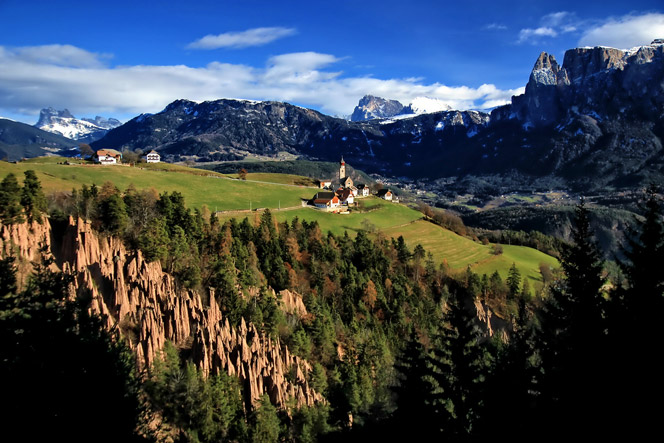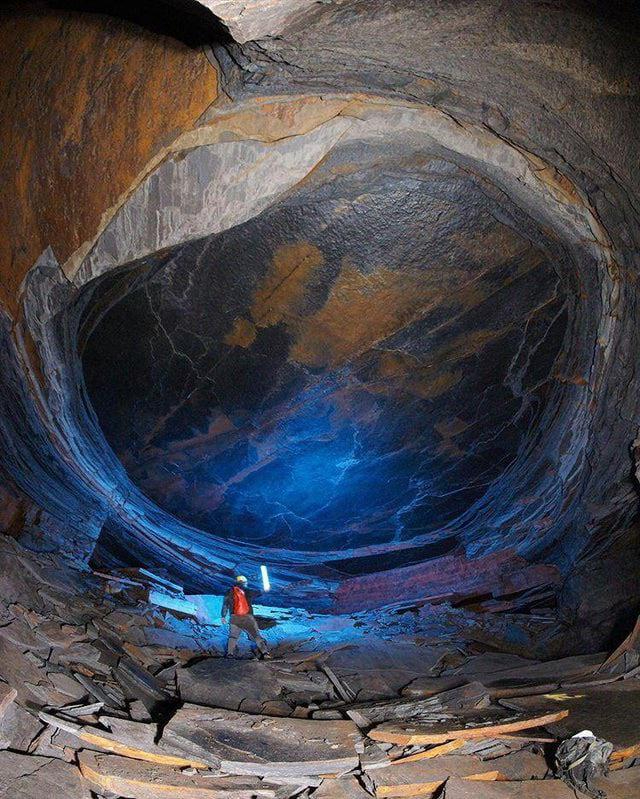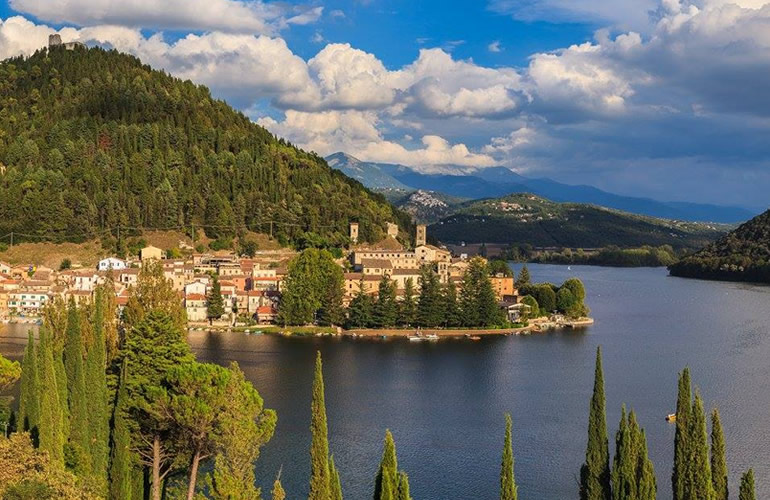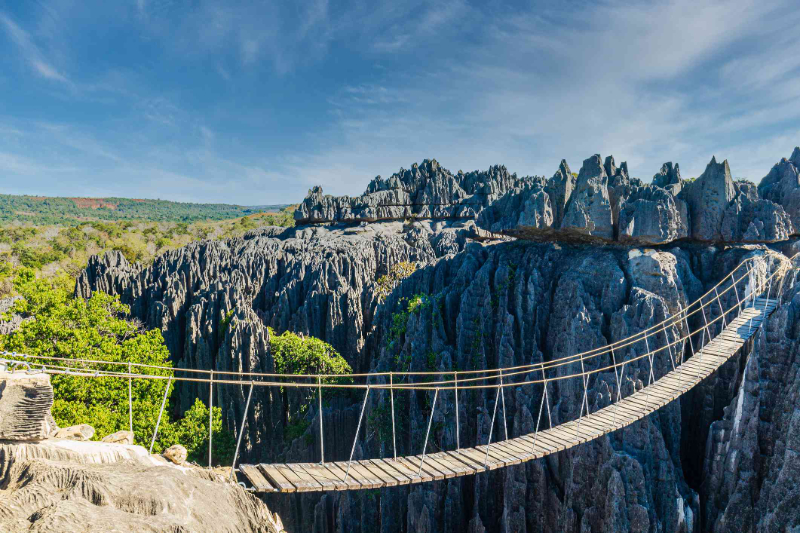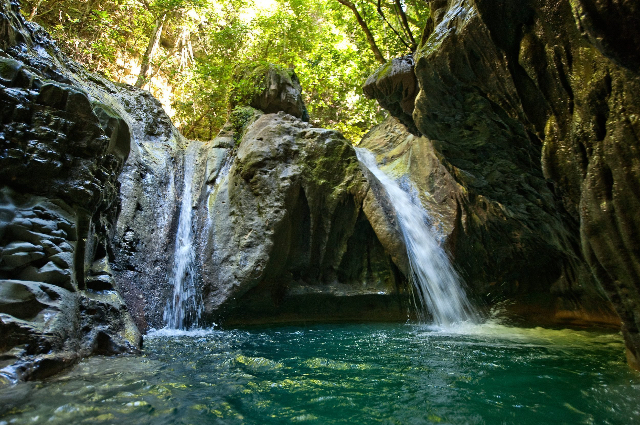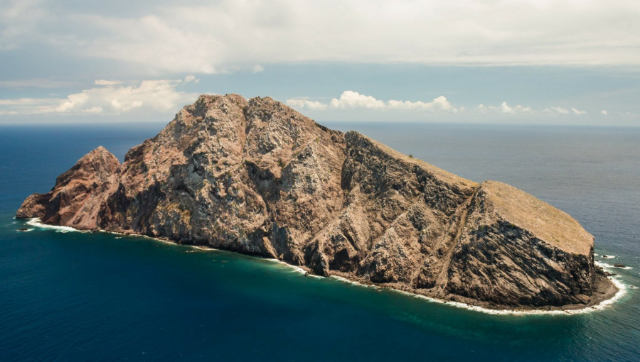The tallest and most beautifully shaped earth pyramids in Europe are found on the Renon, where these extraordinary natural phenomena can be found in several locations on the Plateau: in the Rio Fosco valley on the road to Longomoso and Monte di Mezzo, in the Rio Rivellone valley near Soprabolzano, and in the Rio Gasterer valley in Auna di Sotto.
The pinnacles are formed by cones of moraine material on each of which rests a large boulder, creating unique earth structures consisting of moraine clay of fluvio-glacial origin, a remnant of the main glacier of the Eisack Valley and some local secondary glaciers. These geologic formations have the peculiarity of being cohesive and compact in dry conditions, but as clays, they lose stability when exposed to rain and crumble to form 10- to 15-meter escarpments.
The boulders adhere to the clay creating a barrier against rain, so that with each rainfall an unusual phenomenon occurs: the material not protected by the boulders is eroded and transported downstream causing the majestic earth pyramids to literally emerge from the bottom.
It is difficult to define the time frame within which an earth pyramid can form, as the phenomenon depends on many factors. Just as it is nearly impossible to define precisely how old earth pyramids are or can reach. One thing is certain, however: the most beautiful and largest earth pyramids were formed over thousands of years.
An earth pyramid is destined to disappear rapidly when the so-called "cap" falls off the apex of the column: thus, unprotected, the material remains exposed to the elements and the column shrinks with each precipitation. And while in the course of this process an earth pyramid disappears, a new one is simultaneously formed on the escarpment.
